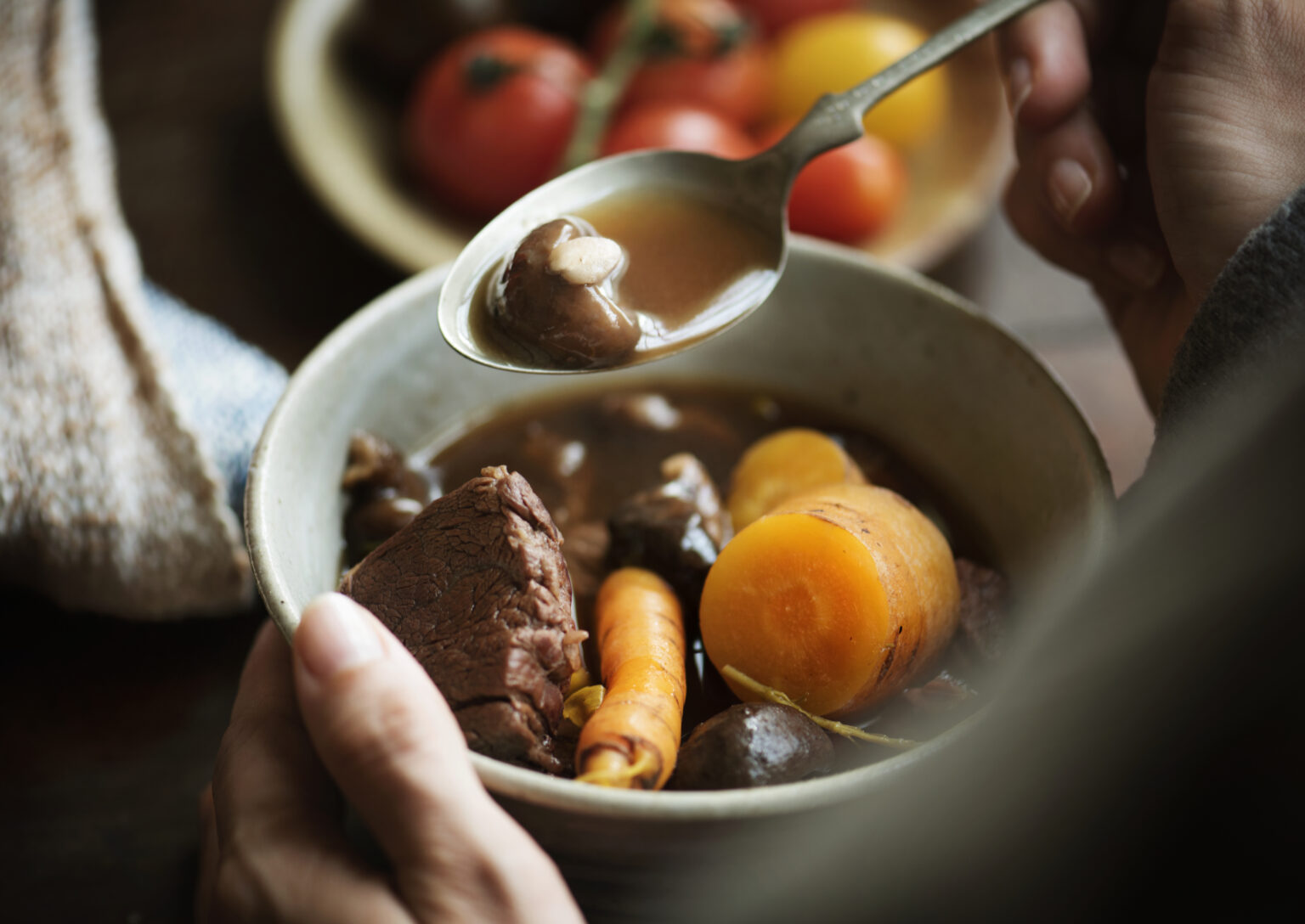African stews and soups are renowned for their rich flavors, vibrant colors, and diverse array of ingredients. Across the continent, various regions and cultures have their own unique recipes and culinary traditions. From West African peanut stews to East African spicy soups, African cuisine showcases a wide range of ingredients that contribute to the complexity and depth of these dishes. Let’s explore some of the distinctive ingredients commonly found in African stews and soups.
- Palm Nut: Palm nut is a central ingredient in many West African stews and soups. The palm fruits are harvested and processed to extract the red oil and creamy pulp, which are used as a base for soups such as Egusi soup in Nigeria or Abenkwan in Ghana. The palm nut imparts a distinct flavor and a velvety texture to the dish.
- Egusi (Melon Seeds): Egusi, also known as melon seeds, is widely used in West and Central African cuisines. Ground egusi seeds are commonly added to soups and stews, including Egusi soup, which is a popular Nigerian dish. Egusi adds a nutty flavor and thickens the soup, creating a rich and hearty consistency.
- Groundnut (Peanut): Groundnut, or peanut, is a versatile ingredient found in many African stews and sauces. In West Africa, groundnut stew, also known as Maafe or Domoda, is a signature dish. The stew combines peanuts with meat (such as beef or chicken), vegetables, and spices, resulting in a creamy and nutty flavor profile.
- Berbere: Berbere is a fiery spice blend commonly used in Ethiopian and Eritrean stews, such as Doro Wat and Misir Wat. It is a combination of chili peppers, garlic, ginger, paprika, fenugreek, and various other spices. Berbere adds a complex and spicy flavor to the stews, giving them their characteristic taste.
- Okra: Okra is a versatile vegetable used in stews and soups across different African regions. Its natural thickening properties make it a popular ingredient in dishes like Gumbo in West Africa or Ewedu soup in Nigeria. Okra contributes a silky texture and adds a unique flavor to the dishes.
- Cassava Leaves: Cassava leaves are a common ingredient in Central and West African cuisine. They are used to make delicious stews such as Palava sauce or Saka Saka. The leaves are finely chopped or ground and then cooked with spices, vegetables, and sometimes meat or fish. The resulting stew has a rich and earthy flavor.
- Morogo (African Spinach): Morogo, also known as African spinach or Amaranth leaves, is a leafy green vegetable widely used in Southern African cuisine. It is often added to stews, such as Morogo wa dinawa in Botswana or Sukuma Wiki in East Africa. Morogo provides a unique taste and texture, contributing to the overall flavor complexity of the dish.
- Tamarind: Tamarind is a tangy and sour ingredient commonly used in African soups and stews to add a distinctive flavor. It is particularly prevalent in West African cuisine, where it is used in dishes such as Efo Riro in Nigeria. Tamarind balances the flavors and adds a refreshing acidity to the dish.
- Plantains: Plantains are a staple ingredient in many African stews and soups. They are often cooked until tender and added to dishes like Matoke in East Africa or Kontomire stew in Ghana. Plantains bring a subtle sweetness and a hearty texture to the stews.
- African Spices: Various spices are used across African cuisines to enhance the flavors of stews and soups. These may include cloves, cinnamon, ginger, garlic, turmeric, coriander, cumin, and more. The combination of spices varies by region and contributes to the unique taste profiles of African dishes.
African stews and soups are a reflection of the continent’s rich culinary heritage and the diversity of its ingredients. From the bold flavors of West African peanut stews to the aromatic spices of Ethiopian soups, these dishes offer a tantalizing exploration of African cuisine. The use of unique ingredients adds depth, complexity, and a distinct character to these delightful culinary creations.








